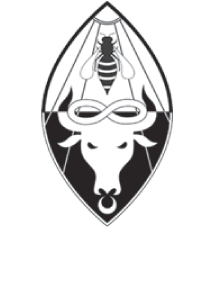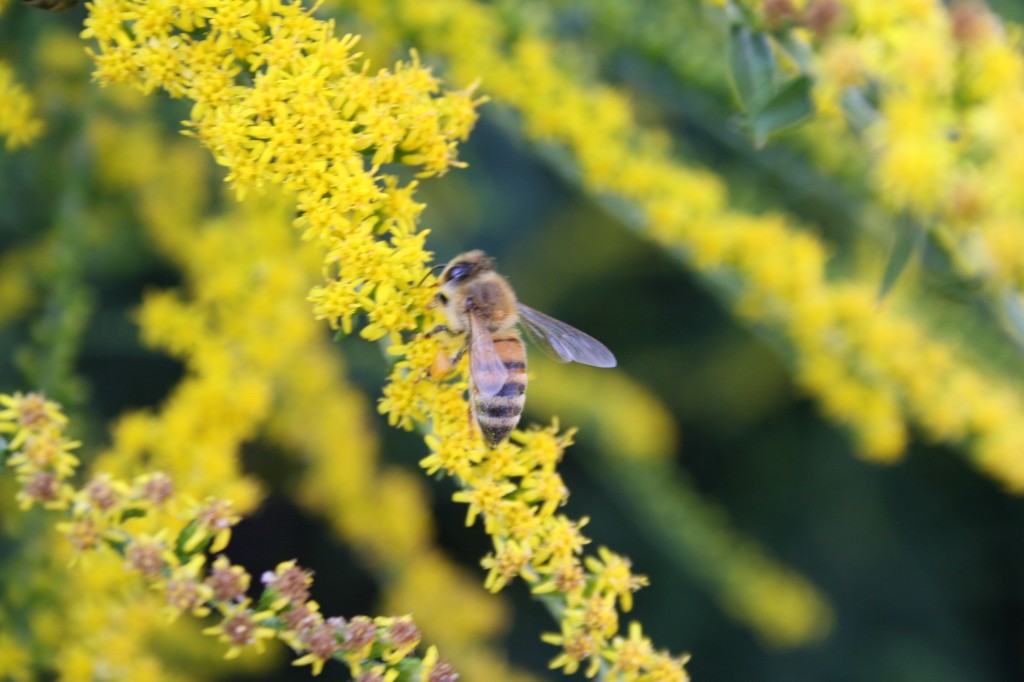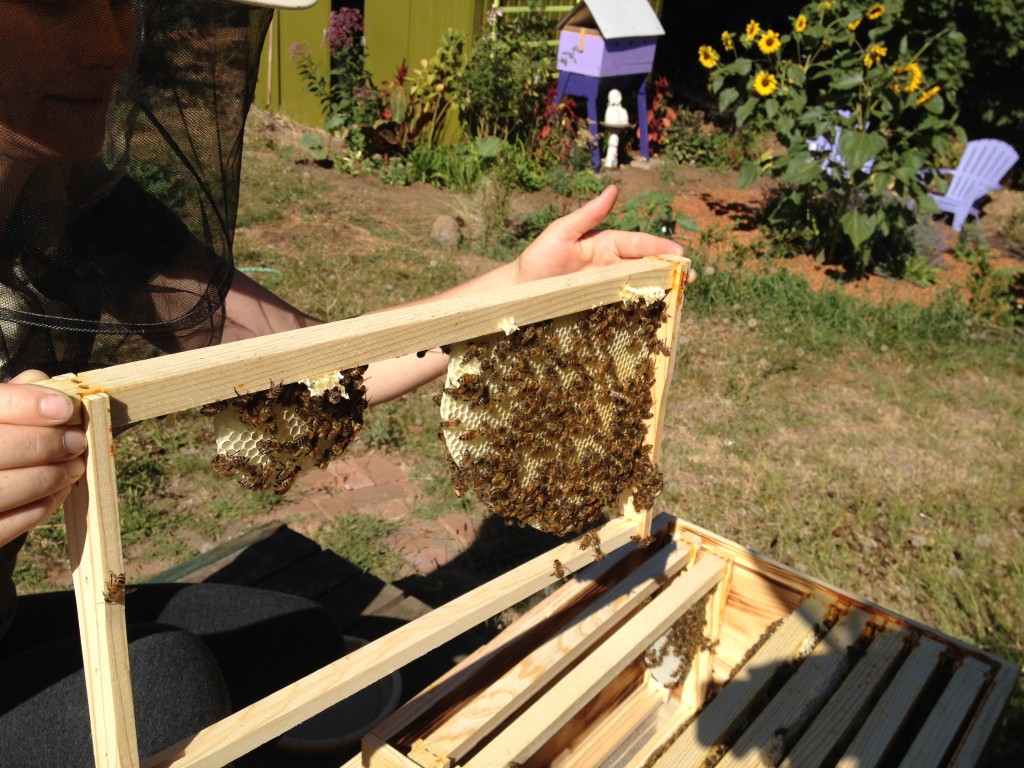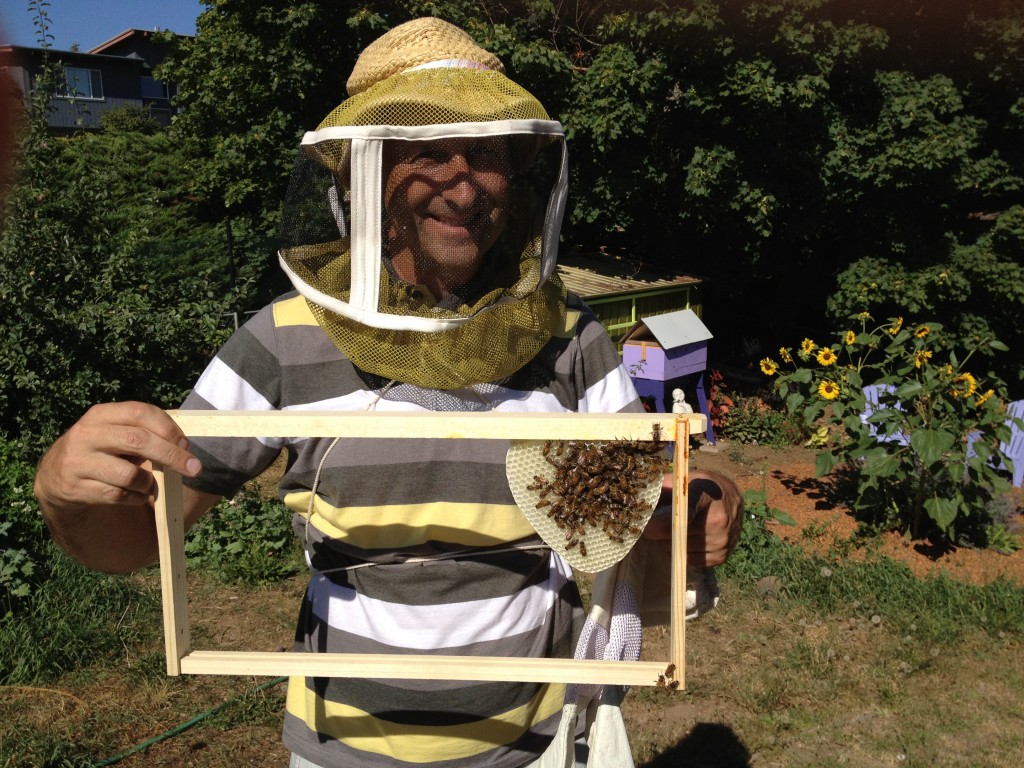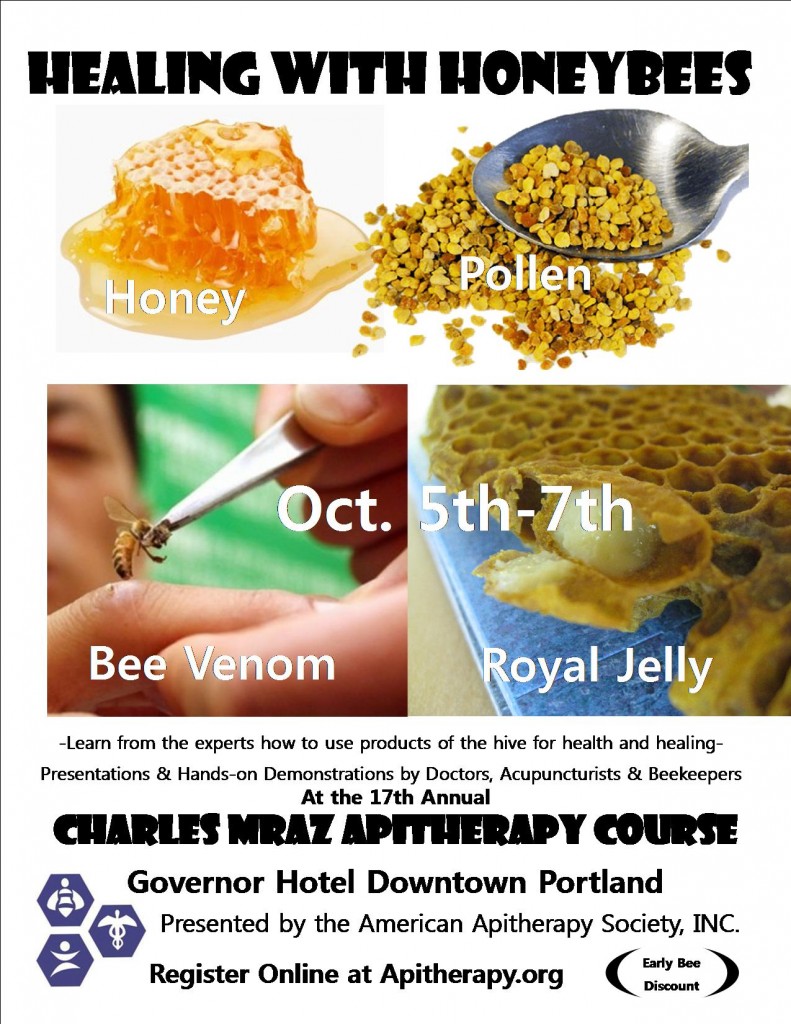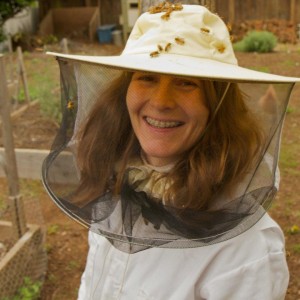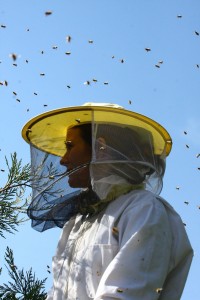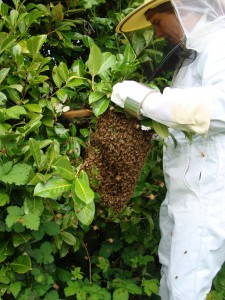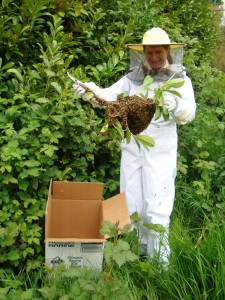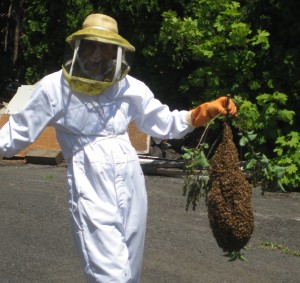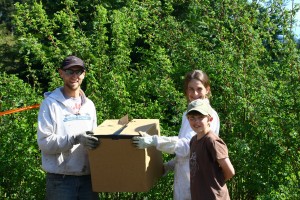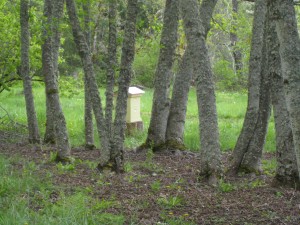Blog
Apipuncture Demonstration Video-Charles Mraz Apitherapy Course coming to Portland Oct. 5-7th 2012
OCT. 5 -7, 2012
AMERICAN APITHERAPY SOCIETY, INC. presents the
17th ANNUAL Charles Mraz Apitherapy Course and Conference
GOVERNOR HOTEL, PORTLAND, OREGON
Go to: www.apitherapy.org for details about the program, faculty, hotel and registration. EARLY BEE REGISTRATION BEFORE 8/31!
Acupuncture originated thousands of years ago from the use of apipuncture, or bee stings on the body’s meridians! Frederique Keller, L.A.c. DOM and president of the American Apitherapy Society, demonstrates apipuncture on Bladder 23 on Dr. Alan Dennison, MD, at the Charles Mraz Apitherapy Course held in New Orleans last year. The course is a wonderful opportunity to learn from and connect with beekeepers, healers and doctors utilizing products of the hive and bee venom therapy (BVT) in their practices.
For local (Portland and Columbia River Gorge)hive products, apitherapy and BVT (bee venom therapy) visit Melissabees.
Bee Pharm Bee Venom+ Herbs Joint +Muscle Rescue
A Miracle Healing Balm For Joints and Muscles
I hate to say it, but after twenty-plus years building gardens- my body is feeling it! You could say its closer to thirty years of physical labor- as when I was a teenager I played competitive tennis- serving, returning and chasing down balls on the court. Tennis, construction work and gardening are notorious for wreaking havoc on joints and muscles. After almost ten hours of pruning and planting in a garden today, my hands and elbows were stiff. As I was driving home from the job site my joints were beginning to argue as they couldn’t find a comfortable resting spot – too much pressure on the wrists hanging from the wheel, or circulation getting cut off from a bent elbow leaning on the armrest.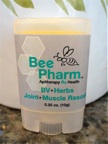
When I got home I took an invigorating shower with Dr. Bronner’s ‘All One!’ Peppermint Soap, wrapped up in a comfy robe and massaged Bee Pharm’s Bee Venom+Herbs Joint +Muscle Rescue into my forearms, elbows, wrists and fingers. Immediately I felt the warm halo-like glow of bee venom and stimulating herbs bringing blood flow to the area. You can see the pinkness in this fuzzy picture of my arm, and if you look closely, the line where the application ended: 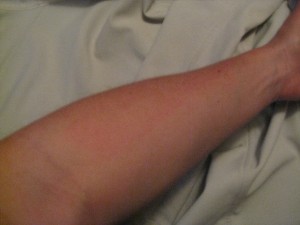
I really love this stuff. It comes in a handy little container and is easy to apply. Whenever I wake up in the morning with a crick in my knee, elbow, neck or finger I rub Bee Pharm Joint and Muscle Rescue where it hurts and the pain is magically transported away within minutes! No need to stick your hands in a hive to receive the healing benefits of a bee sting, just rub this balm directly on your skin. If you work with your hands in a trade of some kind, are into sports, or work at a computer – give it a try, you’ll be amazed with the relief you get.
BeePharm Apitherapy Products are made by Frederique Keller, Lac, DOM, president of the American Apitherapy Society, who is a frequent guest on Dr. Oz demonstrating the health benefits of products of the hive. To purchase her products go to BeePharm, or if you would like to sample and purchase in the Portland Metro area or carry BeePharm products in your store, contact me here.
Clean Teeth with Propolis
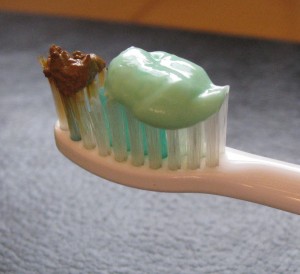 Put a dab of Glen Heaven Brazilian Green Propolis on your toothbrush along with your regular toothpaste and become a model patient for your hygienist! That’s what happened on a recent visit to the dentist when my hygienist commented on how little plaque there was on my teeth and how great my gums look, despite having braces.
Put a dab of Glen Heaven Brazilian Green Propolis on your toothbrush along with your regular toothpaste and become a model patient for your hygienist! That’s what happened on a recent visit to the dentist when my hygienist commented on how little plaque there was on my teeth and how great my gums look, despite having braces.
I got braces nine months ago and was a stress case for awhile trying to keep the’ little train trestles’ as I call them, clean. (At almost forty, I’m convinced that braces are better suited for the reticence and insouciance of youth). Still, I’m stuck with them- and since I like to smile without the worry of grossing someone out with the crud in my teeth I wised up and started brushing with Crest and a little propolis. I’ve used it for seven months now, brushing as little as 2x per day. In recent months I haven’t been as diligent with flossing and despite the apparent neglect my teeth seem to be doing well.
Propolis is made up of the sticky resins of plant and tree buds that the bees gather and combine with wax and saliva to plaster the inside of the hive to create a hygienic living environment. Propolis has antibacterial, anti-fungal and antimicrobial qualities that help keep the the hive and the bees disease-free. The bees use propolis medicinally to protect and bolster their immunity. For humans, propolis has broad spectrum protective and generative qualities.
According to a 2006 Brazilian study of the use of propolis gel to treat chronic periodontitis, propolis was shown to exhibit in vitro antimicrobial activity against periodontal pathogens.
Glen Heaven Brazilian Green Propolis in a 100% aqueous solution can be used as an antibiotic mouthwash or with toothpaste. Your mouth and teeth will look and feel like they just had a cleaning. Ask any dentist and they’ll say dental care takes a back seat for the average Joe until there’s a big problem and its too late! Given the sad state of our economy and the cost of dental and health care on the rise, propolis may offer some folks reprieve, thanks to the bees!
Save the Bees- A Documentary Film by Aiden Wood and Saylor Sundby
Save the Bees, Part 1- ‘The Quest’
Aiden Wood and Saylor Sundby of Hood River, Oregon, affectionately known as The Bee Men are on a mission to become honeybee stewards. They attended my beginning beekeeping class this spring and explained that they were on quest to visit honeybee experts across Oregon and Washington to learn about the plight of the bee and figure out what they could do to help. The two ten year-old boys’ quest was given wings and wheels by their mothers, Holly Higdon-Wood and Katie Sundby, who are a part of a home school group called The Gorge Discovery School, created expressly for this kind of experiential learning. By the time the boys buzzed into my class, they were already well-versed in the honeybees’ struggle from their travels. Sitting in the front row, they were quite observant students and asked thoughtful questions- the hallmarks of excellent beekeepers and problem solvers. Knowing ‘The Bee Men’ and their supportive families gives me a lot of hope for the bees and our futures! Check out the documentary The Bee Men made of their educational adventure, aptly titled ‘Save the Bees’:
Melissa Bees helps Grow Organics start Bee Garden
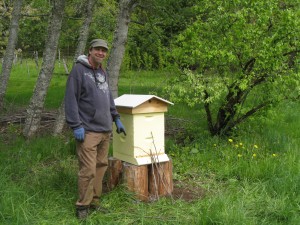 Jeff and Ketrina Jerome recently opened Grow Organics in Hood River, Oregon. It’s a darling store full of DIY kits and equipment to outfit local residents with everything they’ll need to get started with organic growing and not to mention beekeeping! Jeff asked if I would teach beekeeping classes and already we’ve spawned a new generation of holistic beekeepers in the Columbia Gorge. Jeff and Ketrina showed me their property and their vision of having a bee garden. Last Sunday I delivered a hive full of Carniolans to kick off their project. Congratulations, Grow Organics on your grand opening. Here’s to healthy landscapes and hives!
Jeff and Ketrina Jerome recently opened Grow Organics in Hood River, Oregon. It’s a darling store full of DIY kits and equipment to outfit local residents with everything they’ll need to get started with organic growing and not to mention beekeeping! Jeff asked if I would teach beekeeping classes and already we’ve spawned a new generation of holistic beekeepers in the Columbia Gorge. Jeff and Ketrina showed me their property and their vision of having a bee garden. Last Sunday I delivered a hive full of Carniolans to kick off their project. Congratulations, Grow Organics on your grand opening. Here’s to healthy landscapes and hives!
